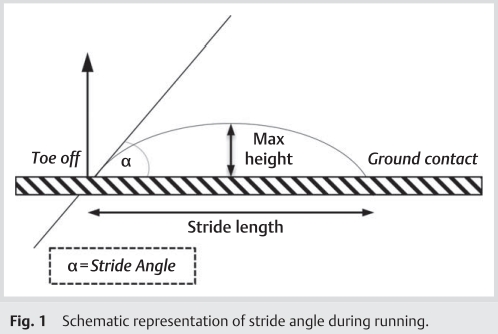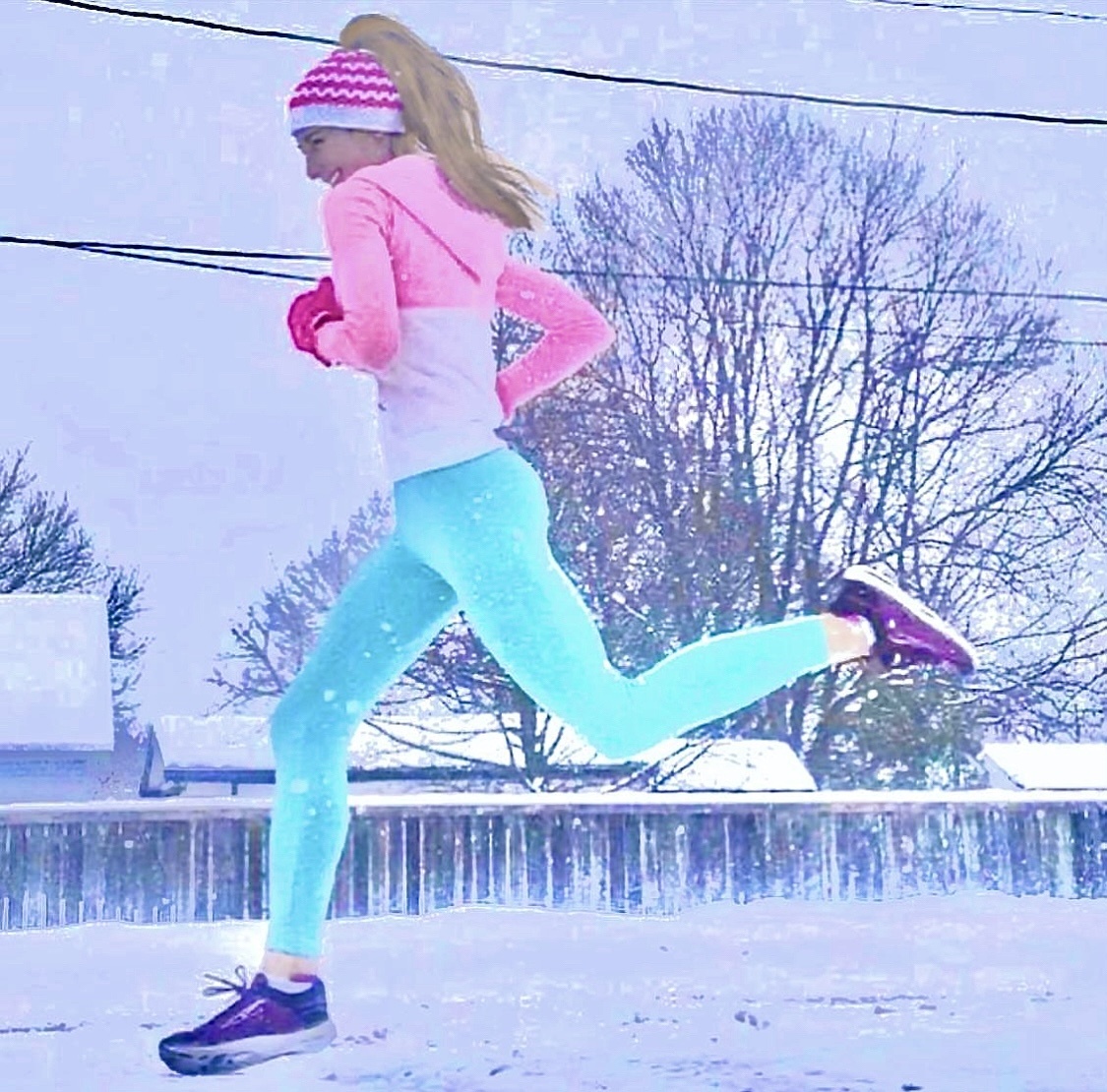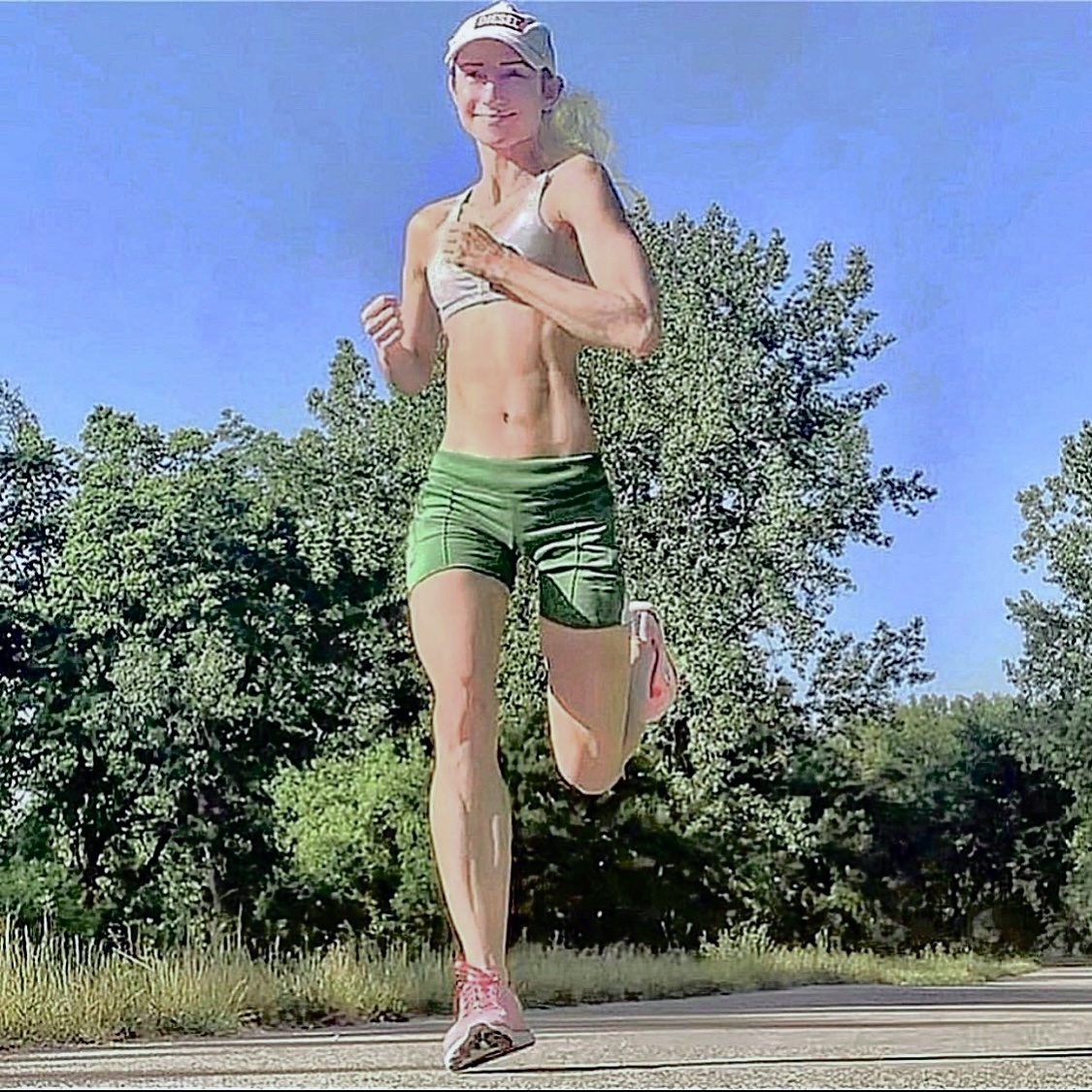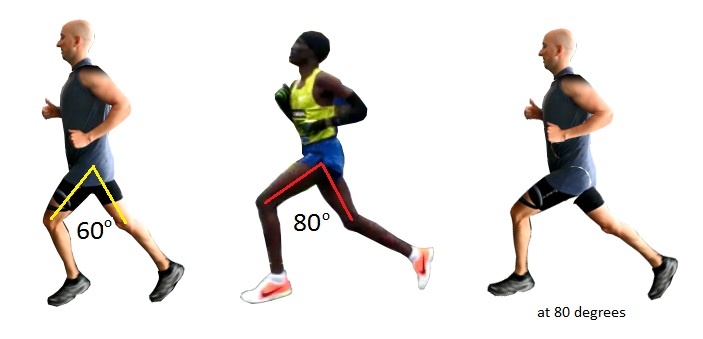Forefoot running is more energy efficient than heel strike running because it naturally allows for a higher stride angle. A 2013 study in the Journal of Strength & Conditioning Research discovered that forefoot runners had faster peak treadmill speed, higher lactate thresholds and better running economy compared to heel strike runners because the forefoot runners had a higher stride angle.
What’s so interesting is the researchers were surprised to find that stride length and frequency did not differ between the two running styles, but the main difference was that the forefoot runners had a significantly higher stride angle than the heel strike runners.
What is Stride Angle and How It Made Forefoot Running More Efficient?
Stride angle is an indicator of running economy and is defined as the angle of the parable tangent derived from the arc traced by the foot during a stride and the ground (Santos-Concejero et al. 2013).
- The stride angle is calculated by tracing a theoretical parabola created by the height of the foot off the ground during stride until ground contact –shown below — (Santos-Concejero et al. 2013)

In simple terms, the higher the stride angle when running, the greater the stride opens up behind the body, rather than in front. This helps reduce the time spent braking which in turn allows for more efficient accelerations. The foot also lifts higher off the ground during the swing phase of running and reduces ground-contact time. The net effect of this is better running economy due to more efficient propulsion that involves less muscular effort (Santos-Concejero et al.2013).
More important, the study demonstrated that foot strike pattern strongly influenced stride angle.
- The researchers revealed that the higher the stride angle, the higher the economical payoff during running and forefoot running was the best way to maximize stride angle vs heel strike running.


Based on the data, forefoot running is a more favourable way to run because it improved much of the economic and injurious shortcomings associated with heel strike running!
If you enjoy my blog on forefoot running, you’ll love my Run Forefoot YouTube channel here!
References:
Santos-Concejero et al. Interaction effects of stride angle and strike pattern on running economy. Orthoped Biomech, 2014; 35(13): 1118-1123.
Santos-Concejero et al. Stride angle as a novel indicator of running economy in well-trained runners. J Strength Cond Res, 2013, doi: 10.1519/ JSC.0000000000000325
If you’d like, you can support Run Forefoot and help keep it going by making a donation in any amount of your choosing:

Or, you can also support Run Forefoot by shopping at the following top minimalist shoes brands, and be sure to bookmark the links:
Be Lenka: https://www.dpbolvw.net/click-7600968-14330828
FeelGrounds: https://www.feelgrounds.com/?p=RunForefoot
Xero Shoes: https://xeroshoes.com/go/Run_Forefoot
Iguaneye: https://www.iguaneye.com/?ref=8tfXVc92
Soft Star Shoes: https://shrsl.com/3mp1b
Wilding Shoes: https://bit.ly/3lIygQP
Earth Runners: https://earthrunners.com/?rfsn=6763579.f7f9c9
Vivobarefoot: https://shrsl.com/3kvih
Zappos: https://goo.gl/J1CeAd

Bretta Riches
BSc Neurobiology; MSc Biomechanics candidate, ultra minimalist runner & founder of RunForefoot. I was a heel striker, always injured. I was inspired by the great Tirunesh Dibaba to try forefoot running. Now, I'm injury free. This is why I launched Run Forefoot, to advocate the health & performance benefits of forefoot running and to raise awareness on the dangers of heel striking, because the world needs to know.
Latest posts by Bretta Riches (see all)
- Can You Run In Barefoot Shoes? Yes, But DON’T Heel Strike! - 21/07/2024
- Why Cushioned Running Shoes Are Really Bad for Your Feet - 19/07/2024
- Do Cushioned Running Shoes Cause Injuries? - 17/07/2024


